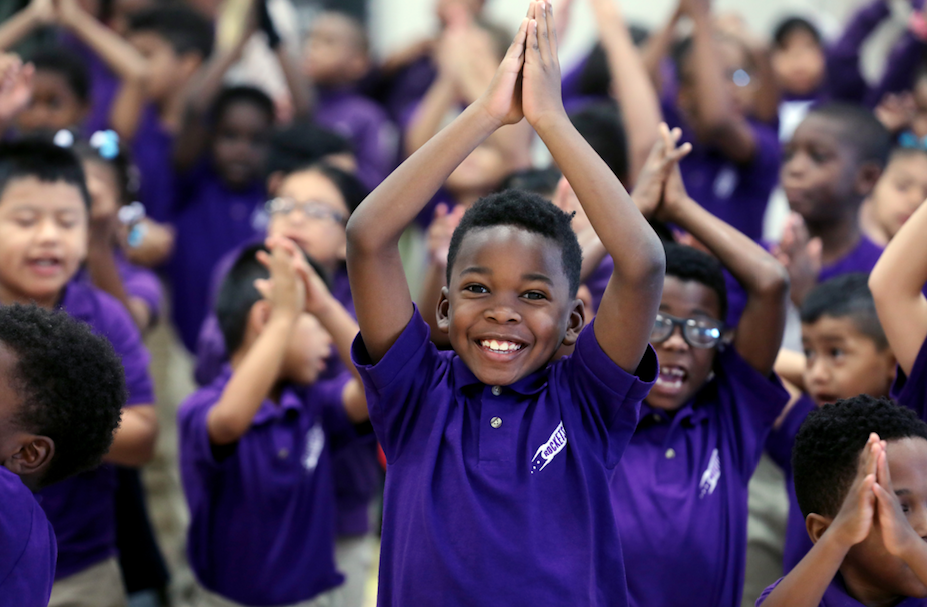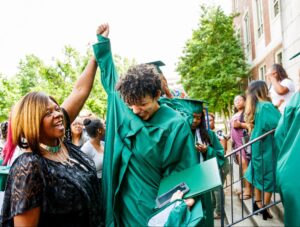By Jermaine Gassaway, Principal of Rocketship Nashville Northeast Elementary and Author of “Unopened Books: Multiplying the 2%”
This article was first published by the USA Today Network – Tennessee.

Jermaine Gassaway, Principal of Rocketship Nashville Northeast Elementary
One day, earlier in my career as an educator, another teacher stopped me in the hallway and asked if I’d take a kindergarten student to the office who had been misbehaving in class. He was a young black male.
I looked him in the eye, shook his hand and said “come with me.” At that moment, this five-year-old’s demeanor shifted. After spending some time with him, it became clear that his behavior was not the primary issue.
Of course, I talked to him about his behavior and the consequences associated with it as well as the importance of getting a quality education. After a while, I took him back to class instead of taking him to the office.
However, later that day, he got into a fight with another student and was immediately suspended from school.
As I pondered my actions and the actions of the kindergarten student, I asked myself: was he really on a downward trajectory or was he desperately longing for care, guidance, and support from an authoritative figure that he could relate to – maybe a black male?
There’s a growing volume of research that shows students’ test scores and attendance go up and suspension rates go down when they have at least one same-race teacher. These correlations are even stronger for black males. I can validate this research from my firsthand experience in the classroom.
One study recently found that if a black male student has even one black male teacher in third, fourth or fifth grade, he is less likely to drop out of high school and more likely to attend a four-year college – and these effects are even more pronounced for economically disadvantaged students.
Yet, here’s the problem: only 2 percent of all teachers are black males.
The teacher pipeline is a real problem. Black Americans are less likely to earn a Bachelor’s degree than their white peers and even less likely to get a teaching degree or receive a teaching license.
These disparities need to be addressed. But in the meantime, we can’t let them stand in our way. Our students deserve opportunities to succeed now.
I became principal at Rocketship Nashville Northeast, a K-4 public charter school, just over a year ago. I was tasked with improving the school’s culture and further elevating our students’ academic performance.
We’re doing this using the “windows and mirrors” approach. I’m a firm believer that students need “windows” that introduce diverse perspectives to their world and “mirrors” that help them see their own lived experiences validated and valued.
To give our students both windows and mirrors, the first thing I set out to do was recruit a diverse pool of teachers. Our teaching staff is now 75 percent educators of color.
Equity in education is about providing each student with what he needs to succeed. At Rocketship Nashville Northeast, two-thirds of our students are black. Providing them what they need includes providing teachers that look like them.
The impact is something you can feel and see. Students and parents smile more. Our hallway transitions are calm and orderly. And academic achievement is on the rise. On our most recent NWEA benchmark assessments, our students were on track to grow 1.66 years in reading and 1.24 years in math by the end of this school year.
The sad reality is that by the time students are in the third grade, prisons are being built on the basis of how many fail standardized tests or get wrapped up in America’s juvenile justice system. For far too many students of color, the gateway to incarceration begins with a referral from the classroom to the courtroom, known as our country’s “school-to-prison pipeline.”
The future of a nine-year-old shouldn’t be based on a test score. Or his zip code. If it were solely up to me, I would refuse to allow our students to join the staggering number of black Americans who become dropouts, prison inmates, illiterate adults and early casualties.
But I am just one person. We need more. Our kids need faces that mirror their own. They need people to look up to beyond athletes and rappers who are idolized on mainstream media outlets. We need a population of men destined for educational institutions instead of prisons.
How do we provide equity in education for black students? How do we change the future of the young black men and women in our era? It is simple. We teach.





